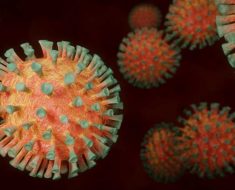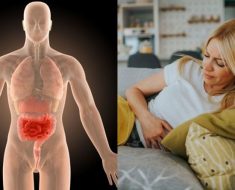In a recent study published on the medRxiv* preprint server, researchers assess the ability of gas chromatography-ion mobility spectrometry (GC-IMS) to differentiate between coronavirus disease 2019 (COVID-19) and other respiratory infections, as well as predict disease severity.

Study: Discriminatory ability of gas chromatography-ion mobility spectrometry to identify patients hospitalised with COVID-19 and predict prognosis. Image Credit: borzywoj / Shutterstock.com
The timely diagnosis and prognosis of severe acute respiratory syndrome coronavirus 2 (SARS-CoV-2)-infected patients is crucial for handling COVID-19 symptoms and reducing the risk of disease severity. Reverse transcription-polymerase chain reaction (RT-PCR) performed on nasopharyngeal samples is widely used to diagnose COVID-19. However, RT-PCR assays require professional intervention and are time-consuming.
About the study
The present study estimates the ability of GC-IMS to diagnose COVID-19 using breath analysis and predict the requirement of continuous positive airway pressure (CPAP) in SARS-CoV-2-infected patients.
This prospective observational study was conducted between February 1, 2021 and May 24, 2021, enrolling hospitalized patients with COVID-19 and other infectious respiratory tract syndromes, along with healthy controls. A breath sample was obtained from each participant and tested using the GC-IMS instrument within 24 hours since the collection of nasopharyngeal swabs for the latest RT-PCR test.
For COVID-19 patients, the study included individuals aged 16 years or older who tested positive for SARS-CoV-2 by RT-PCR and were hospitalized. For other respiratory infections, patients aged 16 years or older who tested negative for SARS-CoV-2 by RT-PCR and were hospitalized with a microbiological, radiological, or clinical diagnosis of another infection of the respiratory tract were enrolled. The current study also included healthy controls aged 16 years or older who had neither respiratory symptoms nor positive SARS-CoV-2 test results in the eight weeks preceding the study.
The researchers collected clinical and demographic data including age, sex, ethnicity, COVID-19 vaccination status, clinical symptoms during sampling, duration between onset of symptoms and study recruitment, laboratory and radiology findings like plasma concentration levels of potassium, sodium, creatinine, urea, and C-reactive protein (CRP), as well as information on the presence of comorbidities including autoimmune disease, diabetes, hypertension, chronic kidney disease, and chronic lung disease.
Study findings
A total of 113 individuals were recruited for the current study, of which 72 were hospitalized due to COVID-19, 20 were hospitalized due to a non-COVID-19 respiratory tract infection, and 21 were healthy controls.
Among the samples tested, 98% were classified as SARS-CoV-2 Alpha or Delta variants of concern (VOCs). Before hospitalization, 27% of COVID-19 patients were vaccinated with one dose of either Pfizer BioNTech or Oxford AstraZeneca vaccines.
Among patients with a respiratory tract infection that was not COVID-19, 12 exhibited radiological features suggesting infection, and two were microbiologically diagnosed for infection by PCR, or blood or sputum culture. Three patients showed respiratory tract infection diagnosed by radiology or microbiology, whereas three others had no positive microbiological results or radiological changes and were diagnosed solely based on their clinical symptoms.
Two respiratory control patients died within 28 days of recruitment. Notably, healthy controls were more likely to be younger, of White ethnicity, and be female as compared to patients hospitalized for respiratory tract infections other than COVID-19.
As compared to patients with other respiratory infections, patients with COVID-19 had a lower white blood cell count.
Taken together, 18% of the COVID-19 patients required CPAP. Moreover, patients requiring CPAP were more likely to have higher serum urea levels and experience symptoms for a longer duration before sampling as compared to patients who did not require CPAP.
Using classifiers like Neural Network and Gaussian Process, GC-IMS had a 98% positive predictive value to distinguish between COVID-19 and other respiratory tract infections in hospitalized patients. GC-IMS showed negative predictive values of 97% while differentiating between COVID-19 patients and healthy controls and a predictive value of 92% in predicting CPAP requirement in hospitalized COVID-19 patients.
The team found that reduced serum white cell count and increased GC-IMS readings were more likely to be associated with a COVID-19 diagnosis as compared to the diagnosis of other respiratory infections. In contrast, the prediction of a CPAP requirement was associated only with longer durations of symptom onset in COVID-19 and not with increased GC-IMS readings.
Conclusions
The study findings showed that GC-IMS can accurately distinguish between COVID-19 infection and other respiratory infections. This approach also can predict CPAP requirements in SARS-CoV-2-related hospitalizations; however, this prediction is dependent on external variables.
The researchers believe that this novel approach can significantly reduce the time and effort required in laboratory testing and has the potential to be incorporated into clinical practice.
*Important notice
medRxiv publishes preliminary scientific reports that are not peer-reviewed and, therefore, should not be regarded as conclusive, guide clinical practice/health-related behavior, or treated as established information.
- Nazareth, J., Pan, D., Kim, J. W., et al. (2022). Discriminatory ability of gas chromatography-ion mobility spectrometry to identify patients hospitalised with COVID-19 and predict prognosis. medRxiv. doi:10.1101/2022.02.28.22271571. https://www.medrxiv.org/content/10.1101/2022.02.28.22271571v1
Posted in: Chromatography | Medical Science News | Medical Research News | Disease/Infection News
Tags: Autoimmune Disease, Blood, Breath Analysis, Cell, Chromatography, Chronic, Chronic Kidney Disease, Coronavirus, Coronavirus Disease COVID-19, C-Reactive Protein, Creatinine, Diabetes, Diagnostics, Gas Chromatography, Ion, Kidney, Kidney Disease, Laboratory, Lung Disease, Microbiology, Nasopharyngeal, Polymerase, Polymerase Chain Reaction, Potassium, Protein, Radiology, Respiratory, Respiratory Tract Infections, SARS, SARS-CoV-2, Severe Acute Respiratory, Severe Acute Respiratory Syndrome, Spectrometry, Syndrome, Transcription, White Blood Cell

Written by
Bhavana Kunkalikar
Bhavana Kunkalikar is a medical writer based in Goa, India. Her academic background is in Pharmaceutical sciences and she holds a Bachelor's degree in Pharmacy. Her educational background allowed her to foster an interest in anatomical and physiological sciences. Her college project work based on ‘The manifestations and causes of sickle cell anemia’ formed the stepping stone to a life-long fascination with human pathophysiology.
Source: Read Full Article





